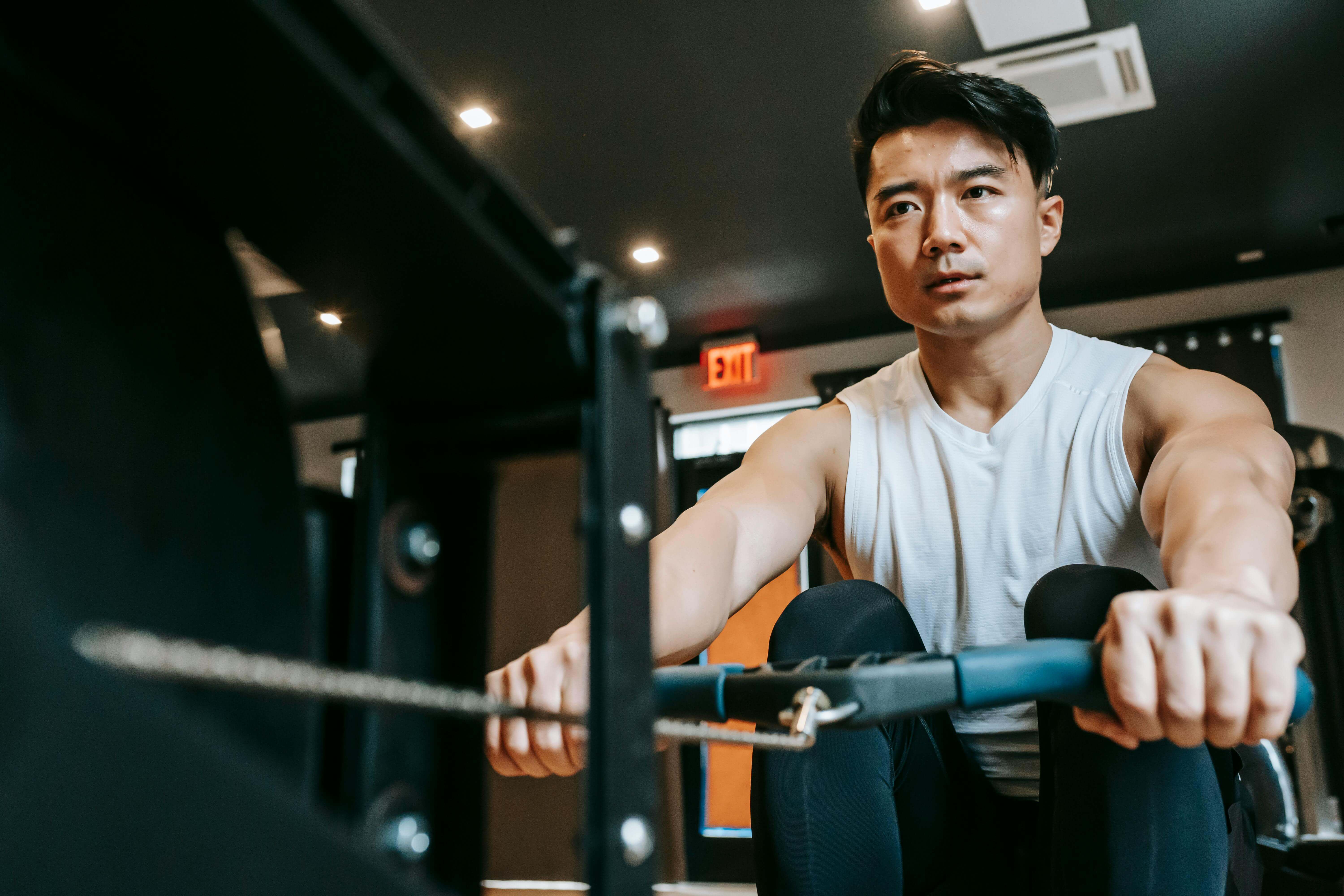Rowing machines have emerged as popular fitness equipment, offering a full-body workout that targets various muscle groups while providing cardiovascular benefits. In this comprehensive guide, we’ll explore the advantages of using rowing machines and delve into effective techniques for maximizing your workout sessions.

Understanding the Mechanics of Rowing Machines
Rowing machines, also known as ergometers or ergs, simulate the motion of rowing a boat. They consist of a sliding seat, footrests, a handlebar, and a resistance mechanism, typically air, water, magnetic, or hydraulic. Understanding how these components work together is essential for mastering the machine and achieving optimal results.
Benefits of Using Rowing Machines
1. Full-Body Workout
Rowing engages multiple muscle groups simultaneously, including the legs, core, back, shoulders, and arms. This comprehensive activation leads to efficient calorie burning and muscle strengthening, making rowing an excellent choice for total-body conditioning.
2. Low-Impact Exercise
Unlike running or jumping, which can place stress on the joints, rowing provides a smooth, low-impact workout. The sliding seat reduces pressure on the knees and hips, making it suitable for individuals with joint issues or those recovering from injuries.
3. Cardiovascular Health
Rowing is an effective cardiovascular exercise that elevates heart rate and improves circulation. By increasing oxygen uptake and enhancing cardiovascular endurance, regular rowing sessions can contribute to heart health and overall fitness.
Getting Started with Rowing Machines
1. Proper Form and Technique
Mastering proper rowing technique is crucial for maximizing efficiency and preventing injury. Begin by sitting tall with a straight back, shoulders relaxed, and core engaged. Initiate the stroke with a powerful leg drive, followed by a fluid arm pull and controlled return to the starting position.
2. Adjusting Resistance Levels
Rowing machines offer adjustable resistance settings to accommodate different fitness levels and workout preferences. Experiment with various resistance levels to find the intensity that challenges you without compromising form or comfort.
3. Setting Up the Machine
Ensure the rowing machine is properly set up before starting your workout. Adjust the foot straps to secure your feet, and position the seat at a comfortable distance from the handlebar. Take time to familiarize yourself with the display console and monitor your performance metrics during the workout.
Effective Rowing Workouts
1. Endurance Training
Long, steady-state rowing sessions are ideal for building endurance and improving cardiovascular fitness. Maintain a consistent pace for extended periods, focusing on breathing rhythm and maintaining proper form throughout the workout.
2. Interval Training
Interval training involves alternating between high-intensity bursts and recovery periods. Incorporate intervals of intense rowing followed by brief rest intervals to challenge your cardiovascular system and increase calorie burn.
3. Strength and Power Workouts
Rowing machines can also be used for strength and power training. Increase resistance levels or incorporate sprint intervals to challenge muscular strength and explosive power. Focus on driving through the legs and engaging the core to generate maximum force with each stroke.
Tips for Maximizing Rowing Workouts
1. Warm-Up and Cool Down
Prioritize a thorough warm-up before starting your rowing workout to prepare your muscles and joints for exercise. Incorporate dynamic stretches and mobility exercises to increase blood flow and flexibility. After the workout, cool down with gentle rowing or stretching to aid in muscle recovery and reduce post-exercise soreness.
2. Monitor Progress and Set Goals
Keep track of your rowing performance metrics, such as distance, time, and stroke rate, to monitor progress over time. Set specific, measurable goals to challenge yourself and stay motivated. Whether aiming to improve endurance, increase power, or achieve weight loss goals, having clear objectives can enhance focus and commitment to your workouts.
3. Listen to Your Body
Pay attention to your body’s signals during rowing workouts and adjust intensity or duration as needed. If you experience discomfort or pain, modify your technique or take a break to prevent injury. Gradually increase the intensity and duration of your workouts as your fitness level improves, but always prioritize safety and listen to your body’s limitations.
Conclusion
Rowing machines offer a versatile and effective means of improving fitness and achieving overall health goals. By understanding the mechanics of rowing, mastering proper technique, and incorporating varied workouts into your routine, you can unlock the full potential of this dynamic fitness equipment. Whether you’re aiming to build endurance, increase strength, or enhance cardiovascular health, rowing provides a challenging yet rewarding workout experience for individuals of all fitness levels. Incorporate these tips and strategies into your rowing routine to maximize results and enjoy the numerous benefits of this total-body exercise.


